Our Notes & References
“The first purely ethnographic attempt” (Pypin): first edition of this first study of pagan beliefs and rituals among the peoples of Russia, including Siberian and Northern populations.
Mikhail Chulkov (1743-1792) was an active member of the Russian Enlightenment, publishing his own satirical magazines, as well as works on the history of Russian trade and commerce and among the first Russian novels. He engaged with numerous educational activities, striving to spread education and improve people’s lives: wishing to help peasants who did not have access to medical care, Chulkov also prepared and published a rural dictionary of healing diseases in 1789.
Russian ethnography was also a specific interest of Chulkov’s. Written after his Mocker, or Slavonic Tales (1766) and Collection of Various Songs (1770), his Dictionary of Russian Superstitions offers an encyclopaedic overview of Russian household rituals and beliefs. The subjects he explores did not receive much attention as such before, with works such as Georgi’s Description of All the Nationalities…(1776) being more general.
The work combines short and long articles, detailing sometimes the origin of a superstitious behaviour, explaining interpretations of beliefs and giving practical examples; they cover wide-ranging subjects, from ‘mirrors’ to ‘marriages’, and can extend to almost 60 pages, like ‘faith’ and ‘shamanism’. The alphabetical order adds a curious dynamism: for example the river Bug, worshiped by the Slavs, follows the short article on brovi (eyebrows) and the interpretation of their conditions (if they are itchy one should expect guests).
The “fortune-telling” (gadaniia) section is mainly devoted to Slavic traditions. For example, a sure way for a bride to know her future is to lie down in the snow in the evening and next morning to see if “the spot where she lay is smooth, her husband will be calm and serene, but if it is wrinkled, then he will be feisty and pugnacious” (our translation). Finally it is most likely that Chulkov was the first to write observations on mythology of Baba Yaga, one of the most famous Russian folk characters: he “declares Baba Yaga to be an underworld goddess venerated by the ancient Slavs, who made blood sacrifices to her” (Andreas).
Chulkov’s approach is of particular interest. Following the principle of equality of all peoples, whose traditions deserve equal attention and interest, he also wishes to bring enlightenment to these peoples so that they would comply with traditional Christian Orthodox customs and beliefs. Slightly Russo/Slavo-centric, he discusses abundantly beliefs of other peoples, such as the Kalmyks, Kamchadals, Kirghiz, Tatars and Romani (tsygani), mentioning even people of Kuril islands. The culture of the people of Kamchatka is especially well studied in most articles, with many details give: women of the region, for instance, eat spiders in order to be fertile.
Chulkov’s Dictionary became one of the main sources on the ritual culture of the peoples of Russia, and a very influential work indeed. Puhskin owned a copy of the 1786 second edition, renamed ABC of Russian superstitions…. (Abevega russkikh sueverii…), and the work prompted further research among 19th-c. scholars, including Aleksandr Afanasiev, Ivan Sakharov and Vladimir Dal.
Very rare: apparently no copy at auction in or outside Russia in recent decades, with only the Diaghilev-Lifar copy of the second edition selling in 1975. WorldCat gives confusing results, mixed with microforms, digital versions, reeditions and reproductions; we could trace for sure six physical copies (Harvard, LOC, Indiana University, Dartmouth and Columbia).
An attractive example in a contemporary Russian marbled calf. This first edition underwent two issues due to flaws in the type setting: the present copy shows the final corrected version of the text.
Bibliography
Bitovt 2121 (under the second ed.); Sopikov 10434; SK XVIII 8193; Sm-Sok 307; Pypin A.N. Istoriia russkoi etnografii. Spb, 1890. Т.1, p. 69; Johns, Andreas. “Baba Iaga and the Russian Mother.” The Slavic and East European Journal, vol. 42, no. 1, American Association of Teachers of Slavic and East European Languages, 1998, pp. 21–36.
Physical Description
Octavo (20.5 x 13 cm). [10] pp. incl. title, 271, [1] pp.
Binding
Full contemporary Russian marbled calf, extensive floral toolwork on flat spine, title label in Russian, sprinkled edges.
Condition
Slightly rubbed, restored at spine ends; restoration to centre of title, a couple small marginal tears, occasional light staining, mostly marginal, small recent inscription in blue ink on upper flyleaf.


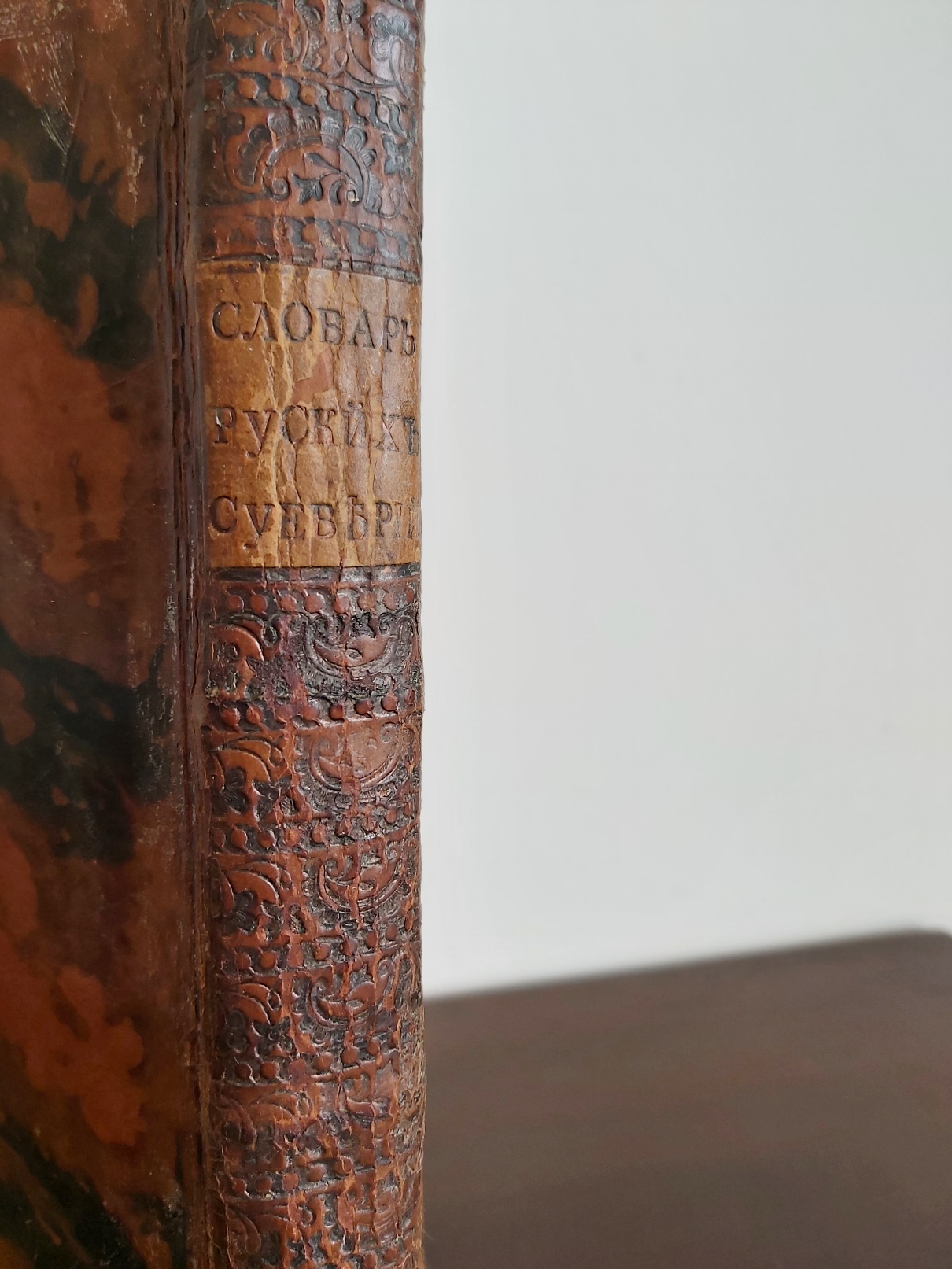
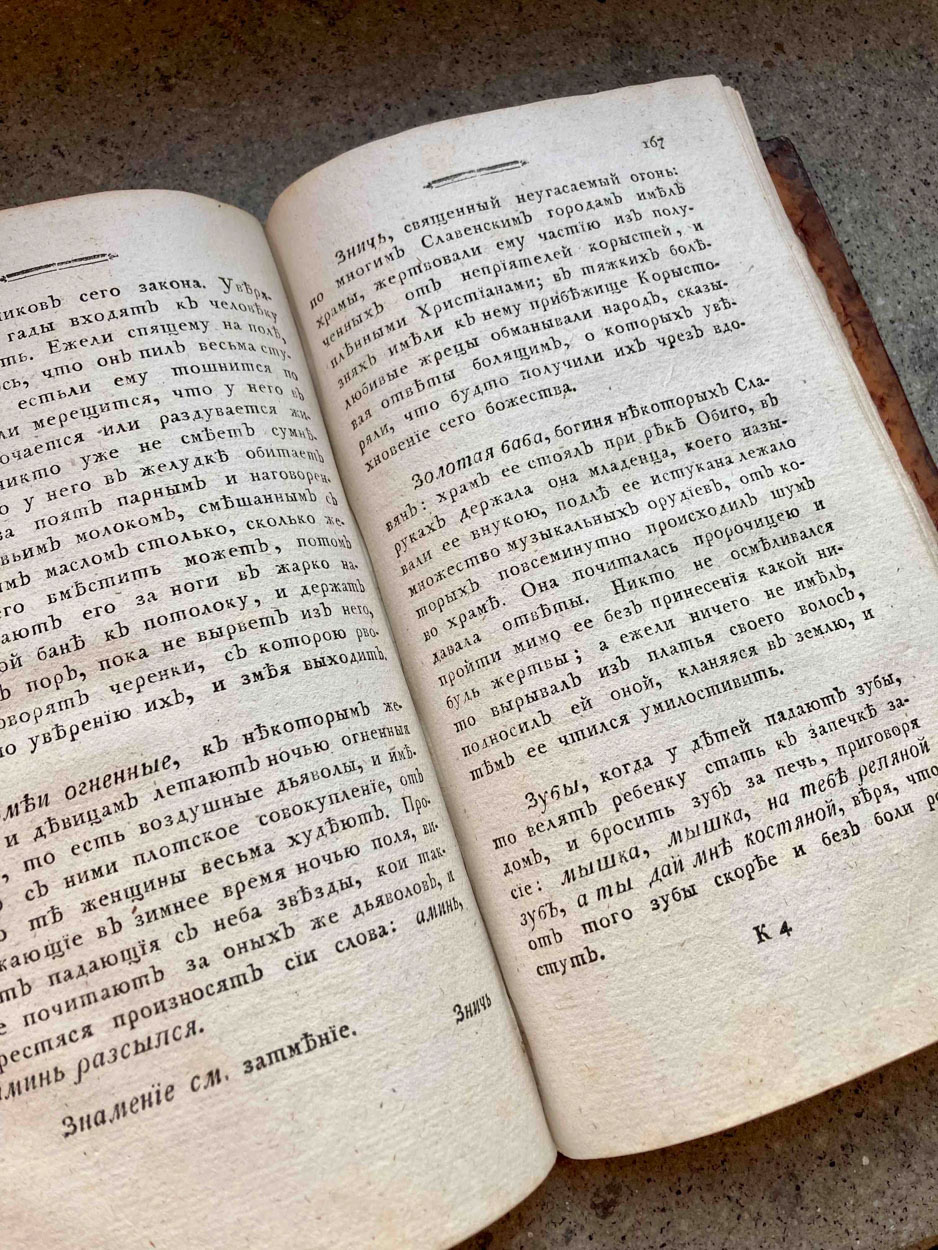
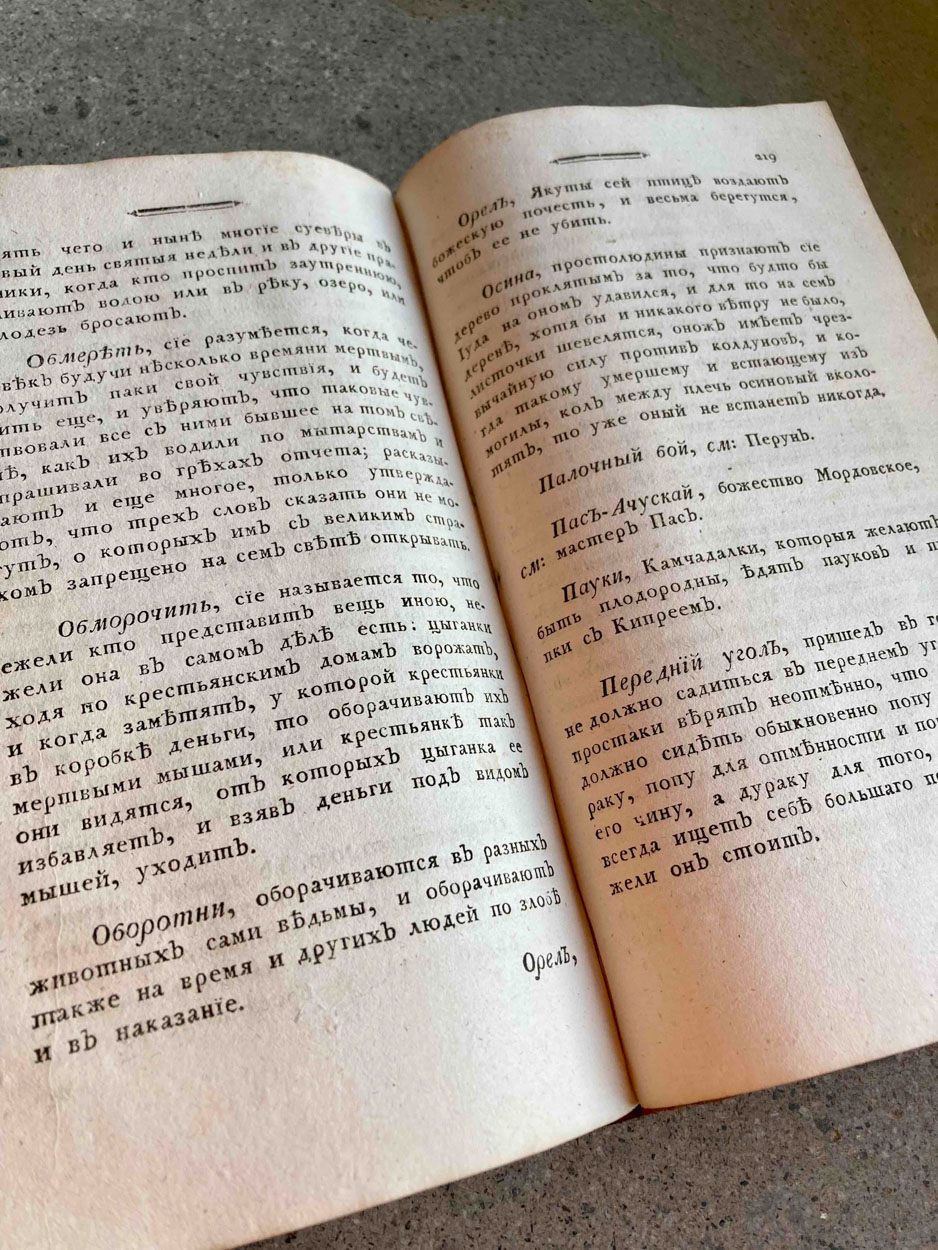
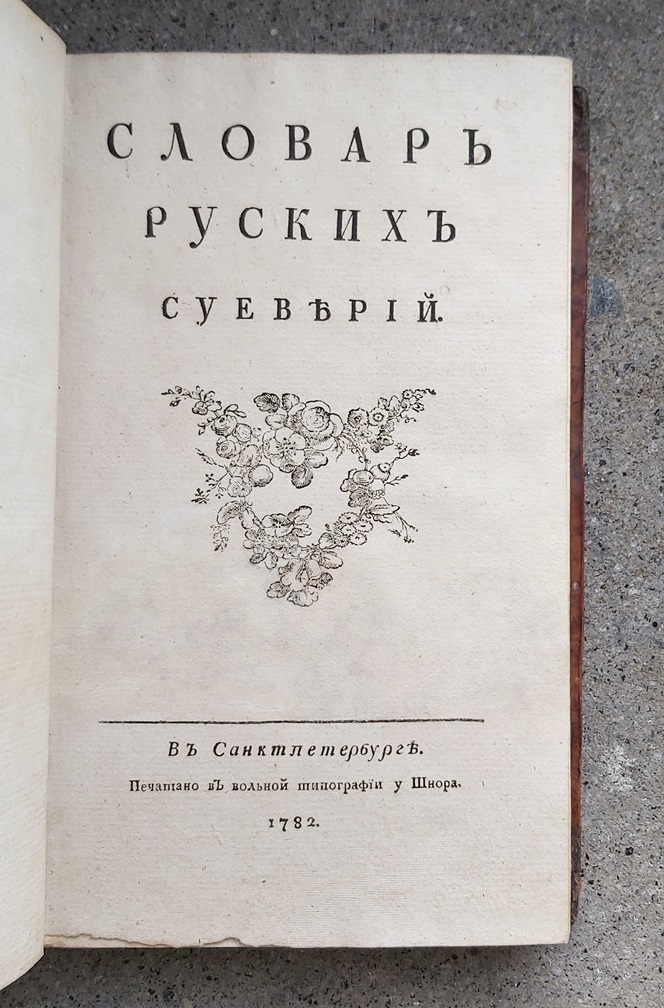
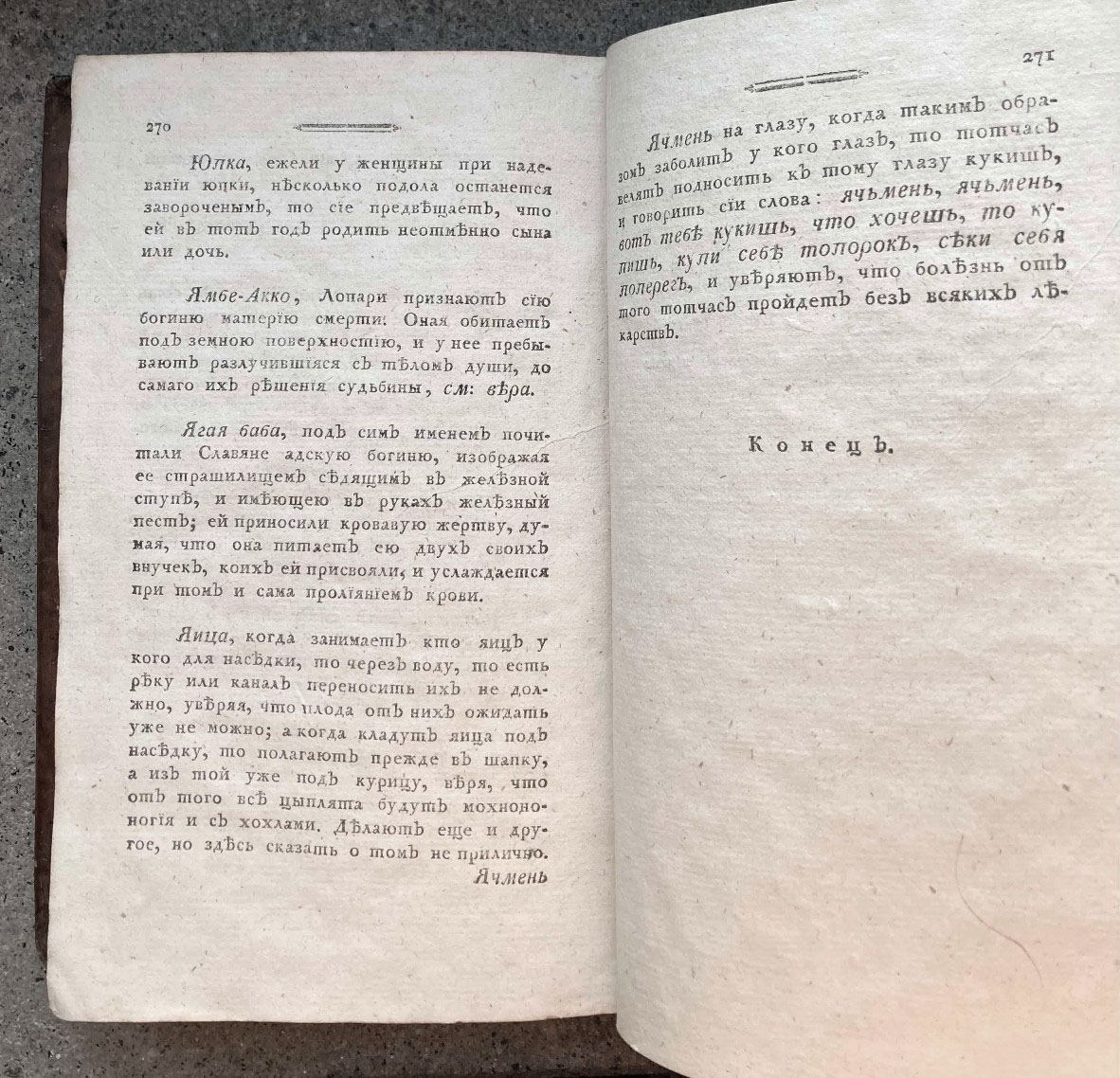
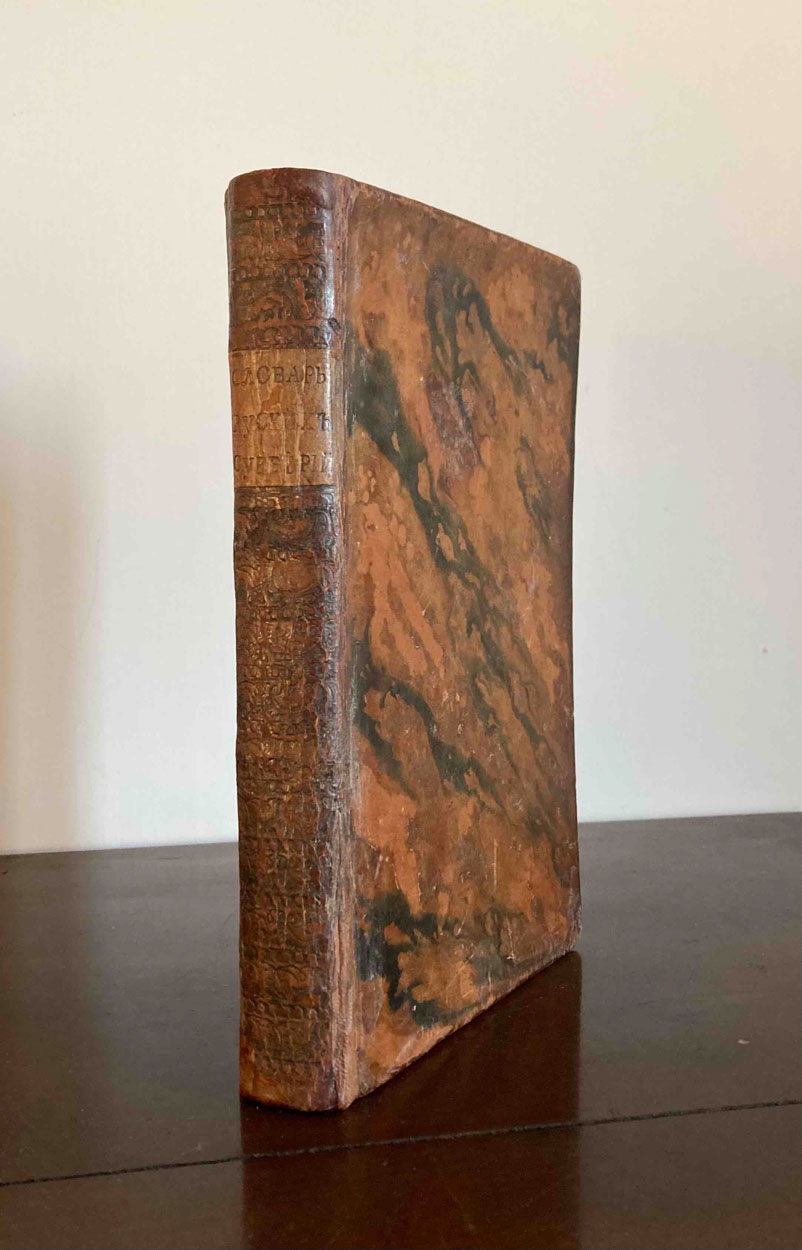
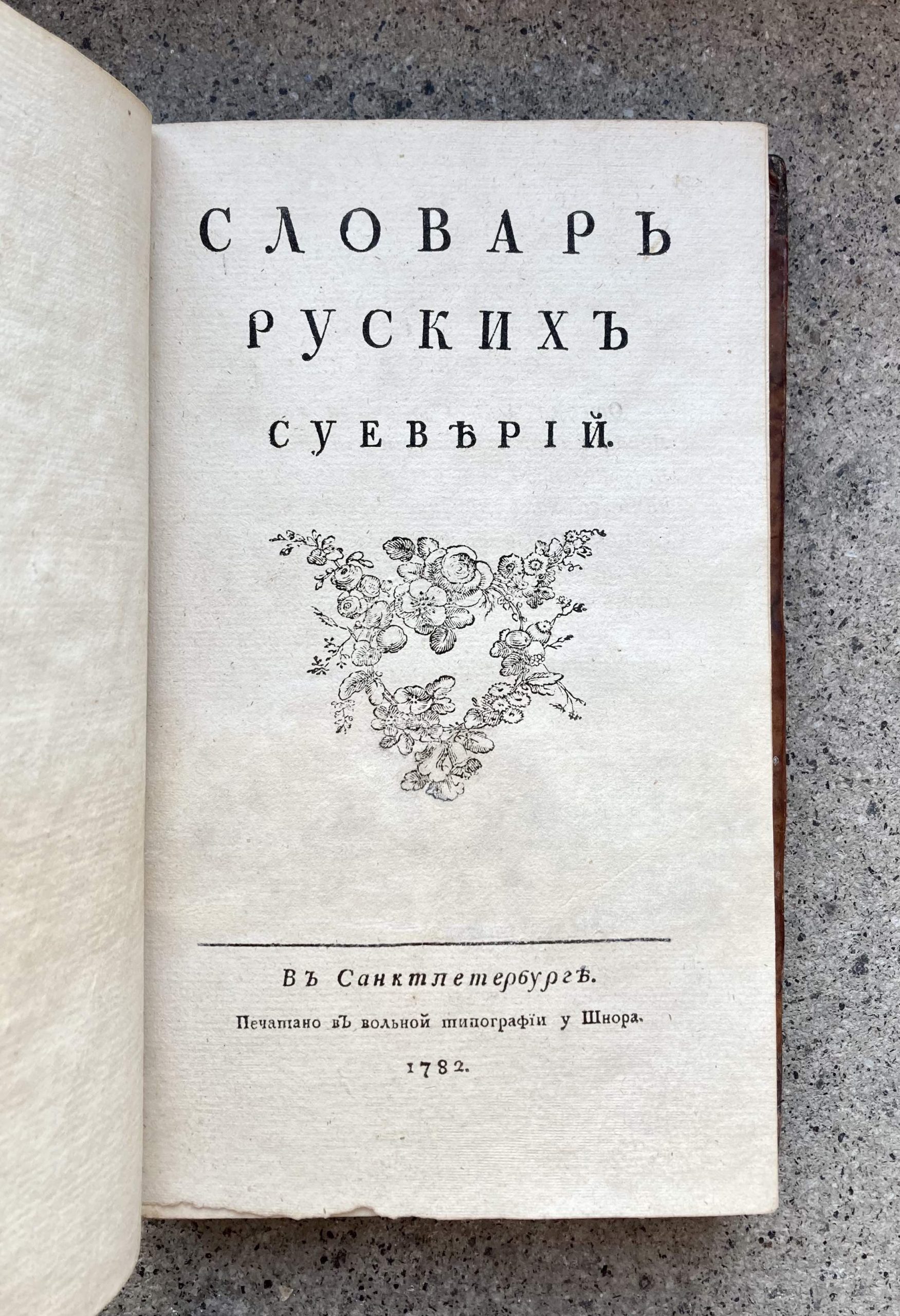
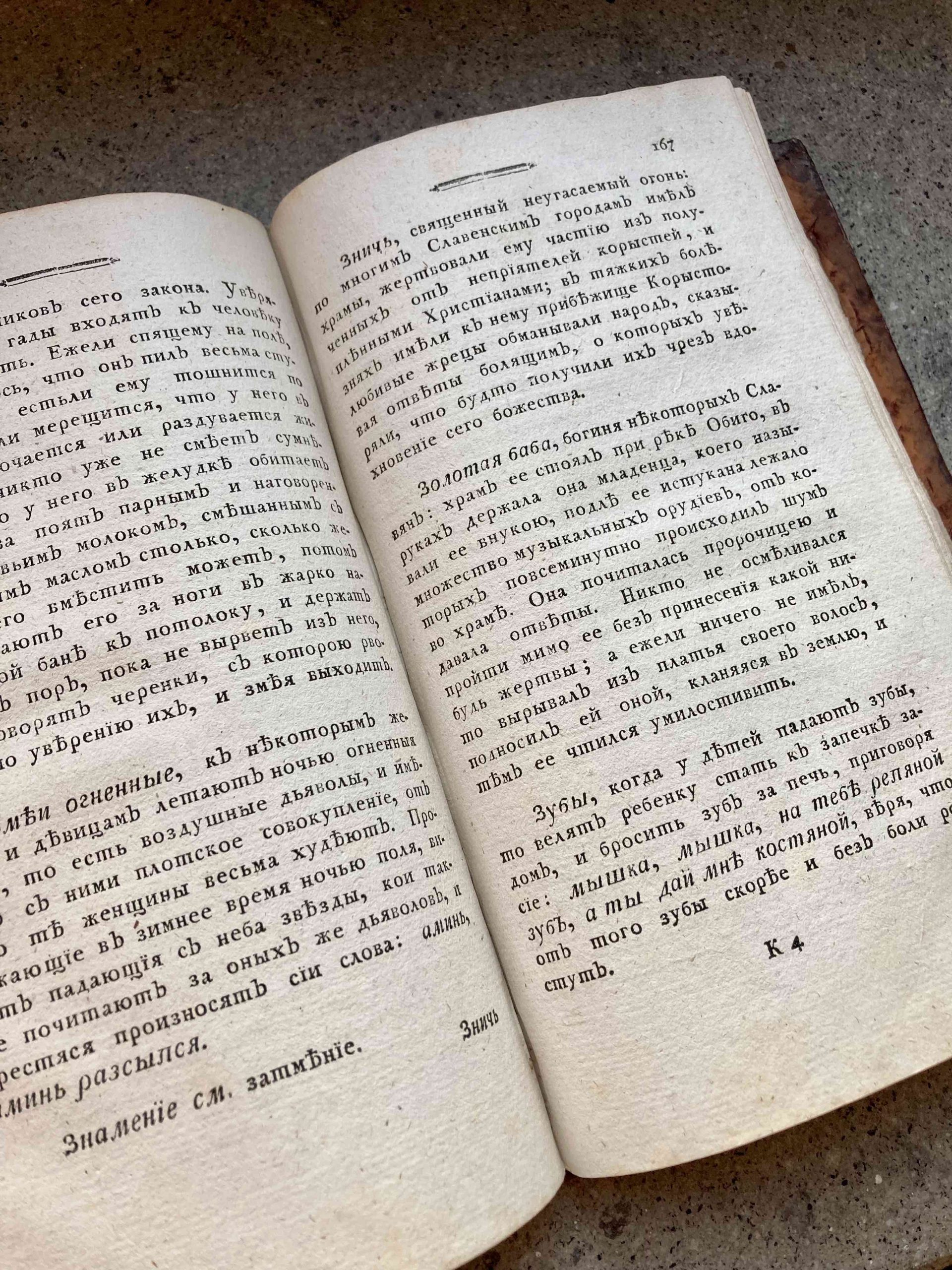
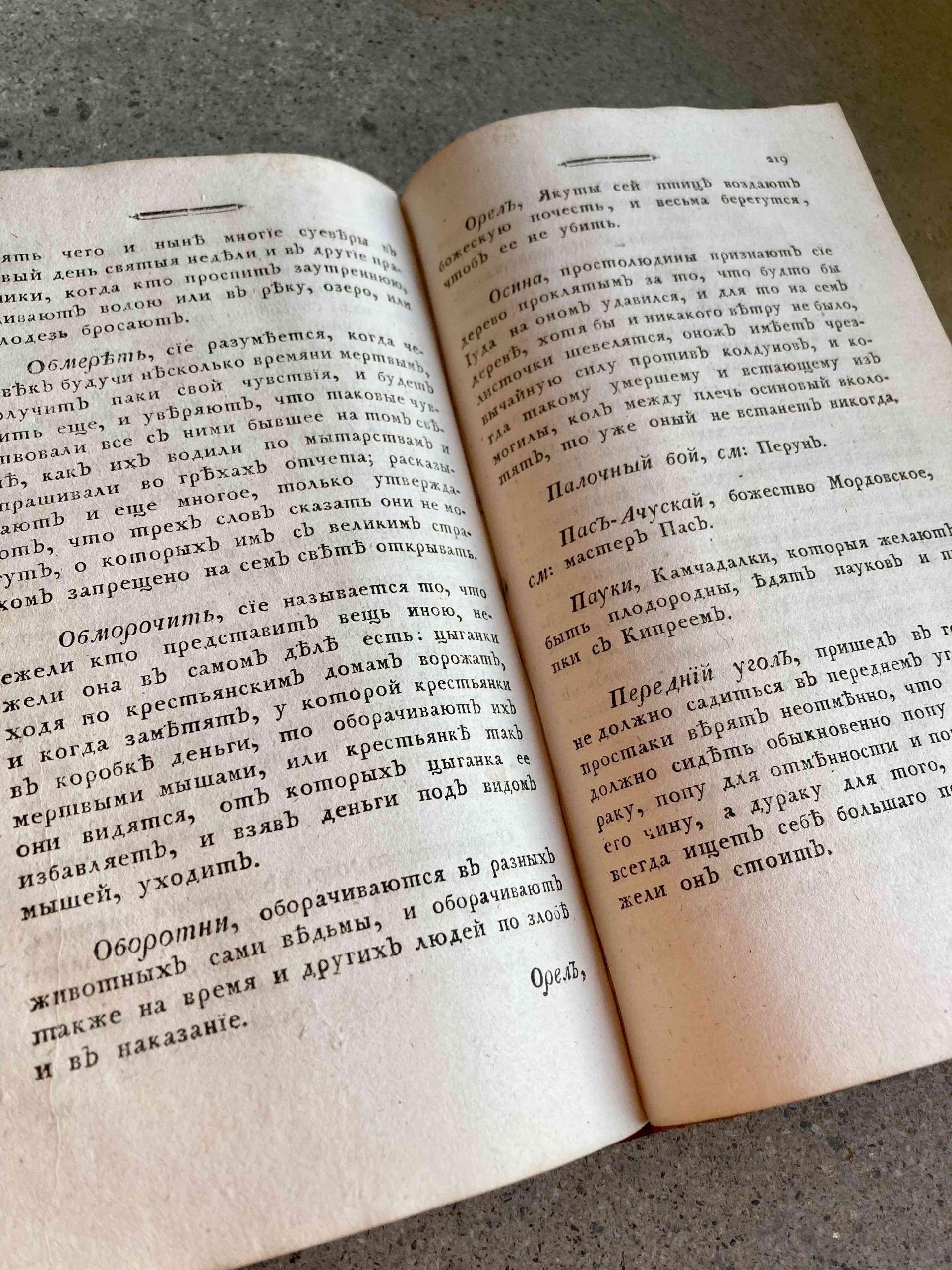
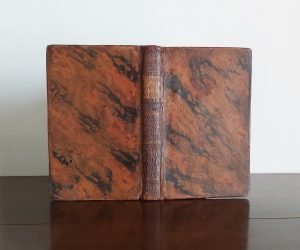
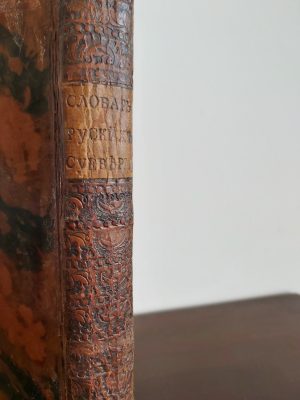
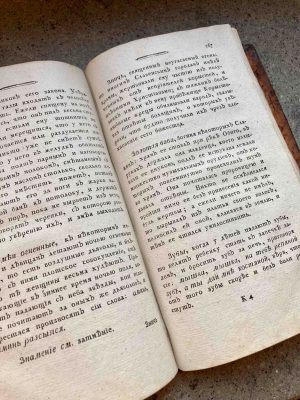
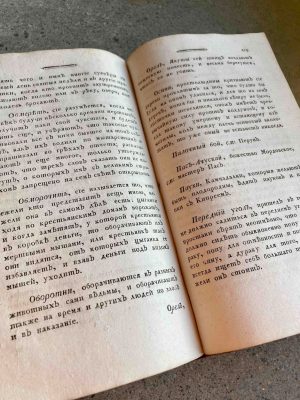
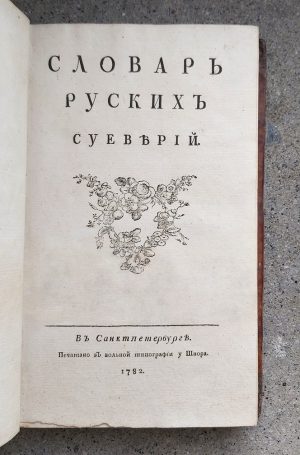
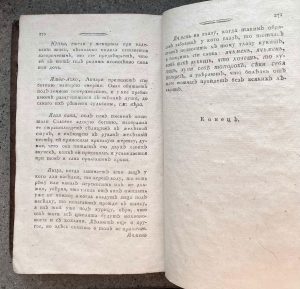
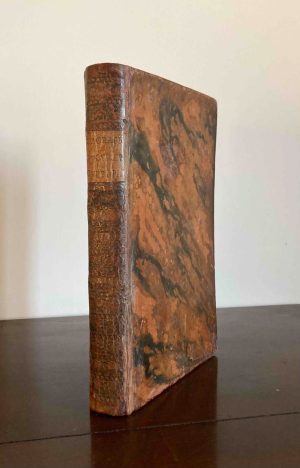
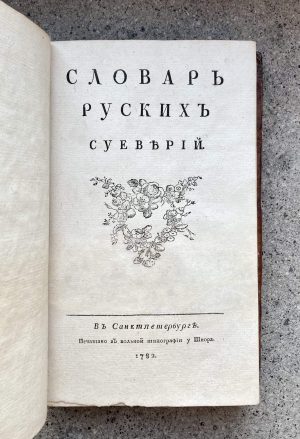
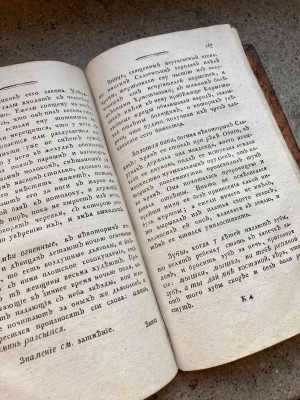
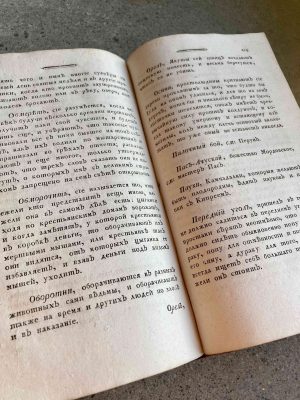
![Image for [BAKST] - ALEXANDRE, A. and J. COCTEAU. L'Art décoratif de Léon Bakst. First edition, 1913. #2](https://www.pyrarebooks.com/wp-content/uploads/2023/04/913_1-300x421.jpg)